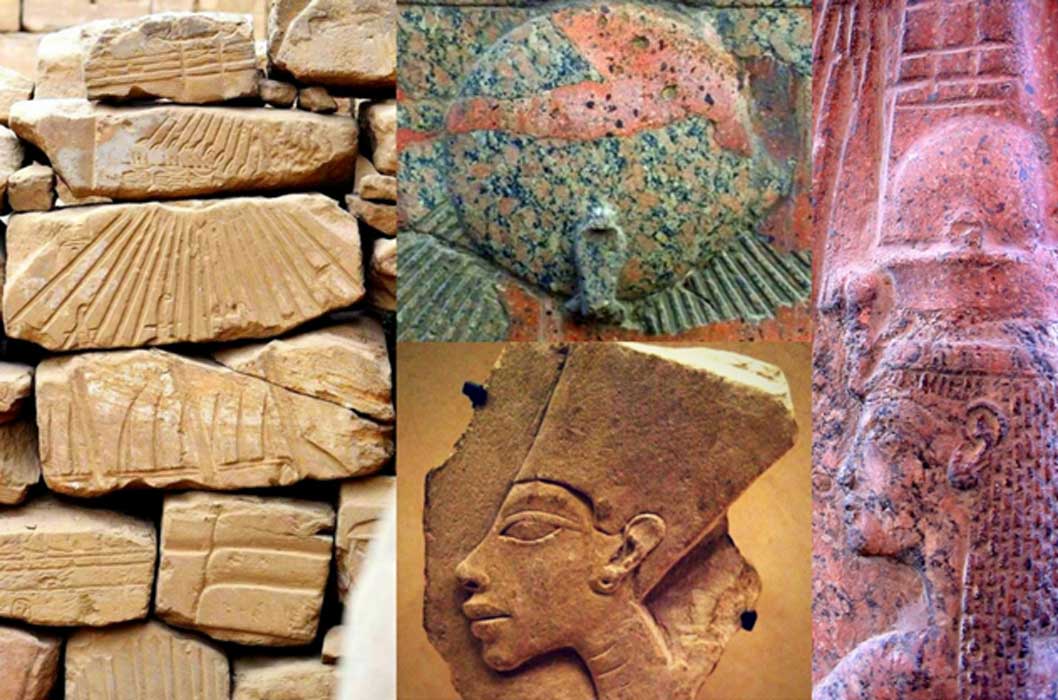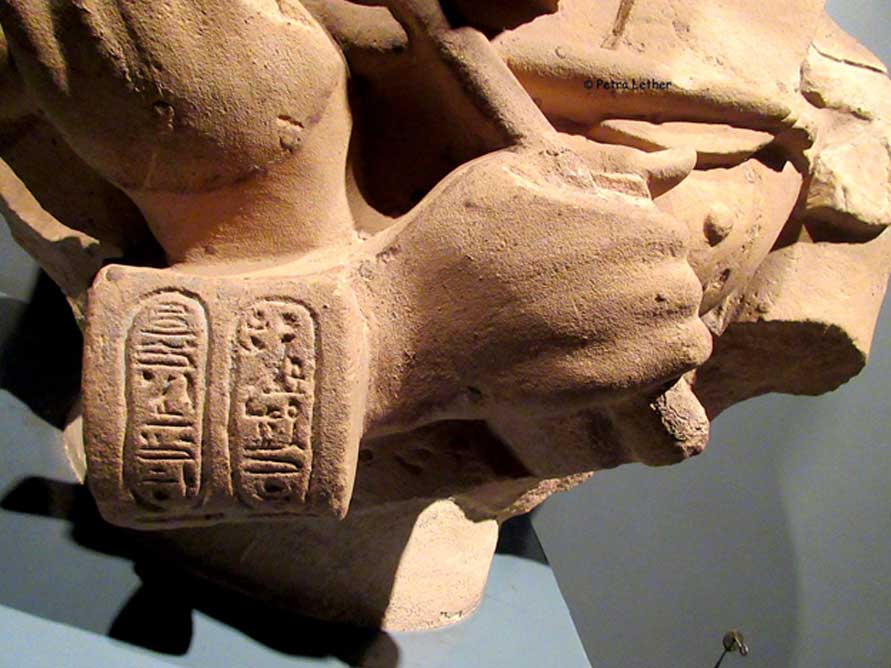
Amarna in 3 Acts: Defining Vignettes from an Incomparable Era
Three important aspects, in many ways, defined and shaped the Akhetaten years and the post-Amarna period. His detractors in the new disposition erased Pharaoh Akhenaten’s memory in great haste—an overwhelming humiliation being the omission of Amarna kings in the Abydos List. But, considering events in the centuries that followed, was the Heretic right to have been wary of the Amun cult; and did he elevate Nefertiti not merely as his co-regent, but as a funerary goddess as well?

An inscribed fragment of an indurated limestone statue from Amarna displays the cartouches of Neferkheperure and Nefertiti Neferneferuaten. After his death, no effort was spared to obliterate the memory of the iconoclastic ruler and his family—a vengeance that was matched only by his own earlier, against the god Amun. Metropolitan Museum of Art, New York.
ACT 1: Nefertiti and the Beautiful Death
Well into the reign of Amenhotep III, new elements were added to Queen Tiye’s portraiture; and this included her representation as a sphinx trampling enemies in the Asasif tomb of her steward Kheruef (TT192)—iconography hitherto reserved solely for the pharaoh—to accentuate her role as the monarch’s divine and temporal partner. A notable head of the elderly Tiye was crafted after the demise of her husband, and is proof of her divine status ante mortem.





